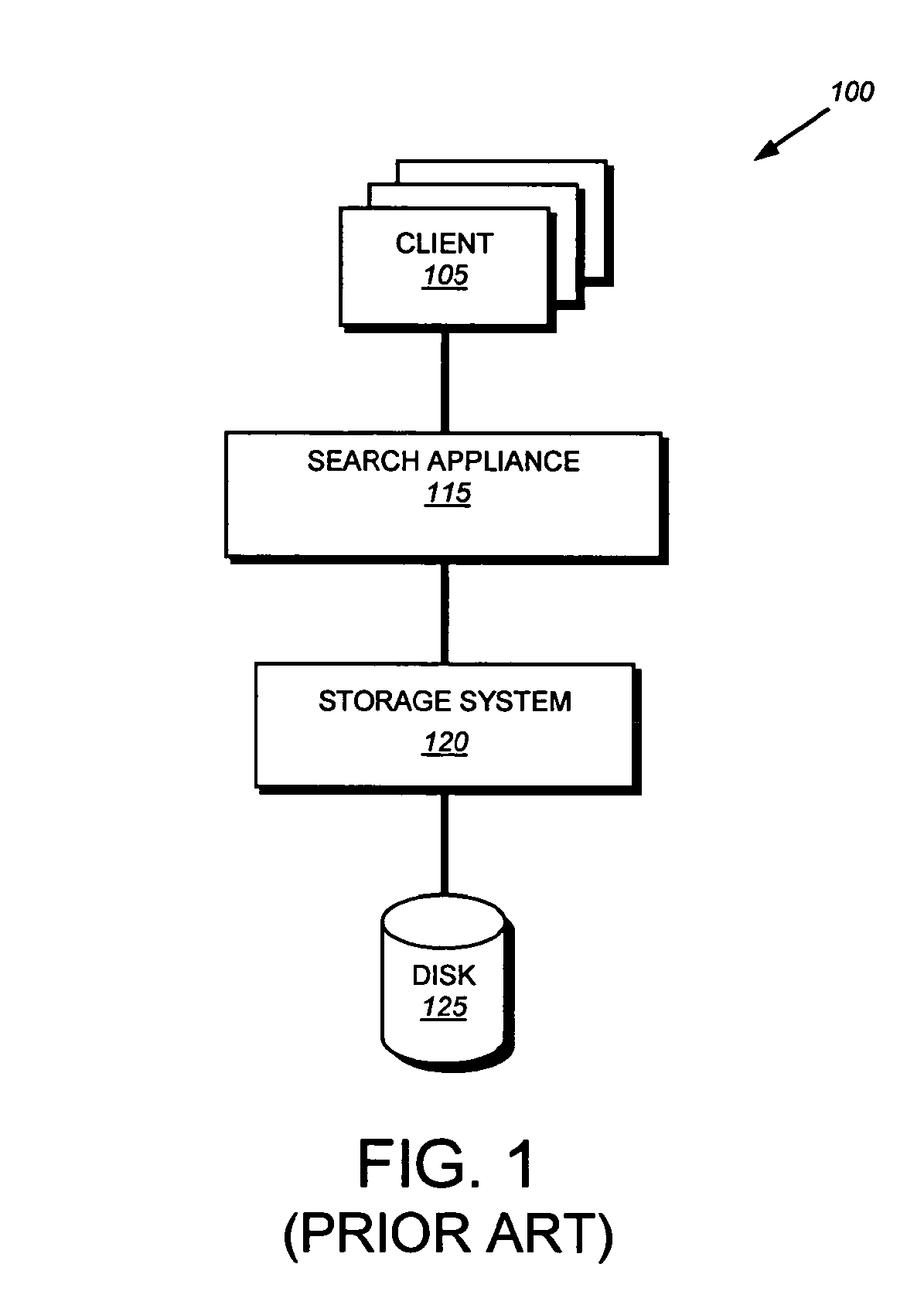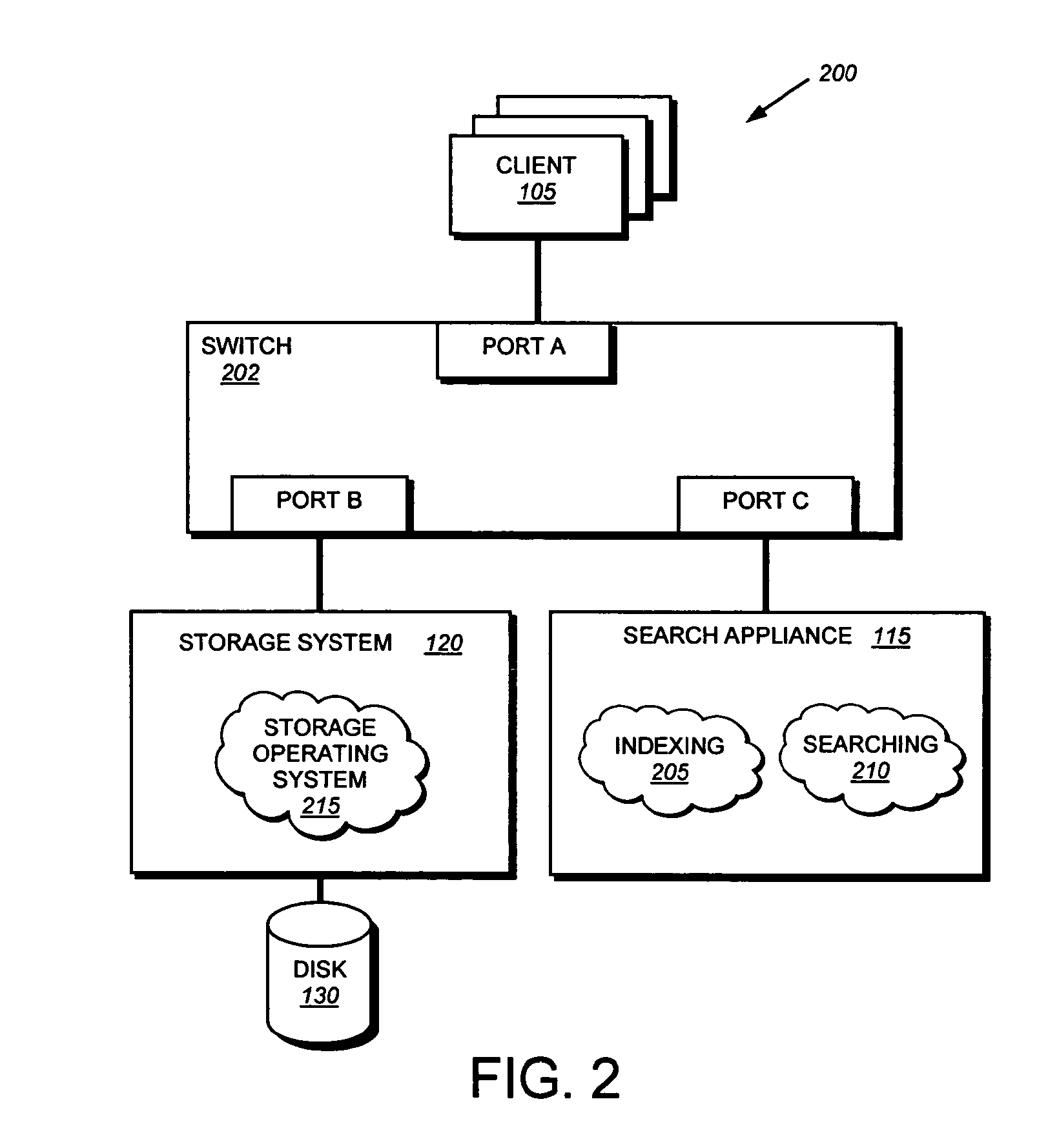System and method for nearly in-band search indexing
a search index and search technology, applied in the field of storage systems, can solve the problems of inability to implement a practical solution, inability to save resources, etc., and achieve the effect of no additional latency
- Summary
- Abstract
- Description
- Claims
- Application Information
AI Technical Summary
Benefits of technology
Problems solved by technology
Method used
Image
Examples
Embodiment Construction
[0023]The present invention provides a system and method for nearly in-band search indexing. By nearly in-band it is meant that a copy of the data stream is received by the search appliance, similar to an in-band arrangement; however, the search appliance is not in the direct data path between a client and the storage system, similar to an out of band arrangement. A search appliance is operatively interconnected with a first port of a network switch (or other intermediate networking device) and a storage system is operatively interconnected with a second port of the switch. Clients may be interconnected with the other ports of the switch. The network switch is then configured to perform port mirroring, i.e., to forward data access requests directed to the storage system to the port associated with the search appliance in addition to the port associated with the storage system. Thus, in response to receiving a data access request addressed to the storage system, the switch forwards t...
PUM
 Login to View More
Login to View More Abstract
Description
Claims
Application Information
 Login to View More
Login to View More - R&D
- Intellectual Property
- Life Sciences
- Materials
- Tech Scout
- Unparalleled Data Quality
- Higher Quality Content
- 60% Fewer Hallucinations
Browse by: Latest US Patents, China's latest patents, Technical Efficacy Thesaurus, Application Domain, Technology Topic, Popular Technical Reports.
© 2025 PatSnap. All rights reserved.Legal|Privacy policy|Modern Slavery Act Transparency Statement|Sitemap|About US| Contact US: help@patsnap.com



